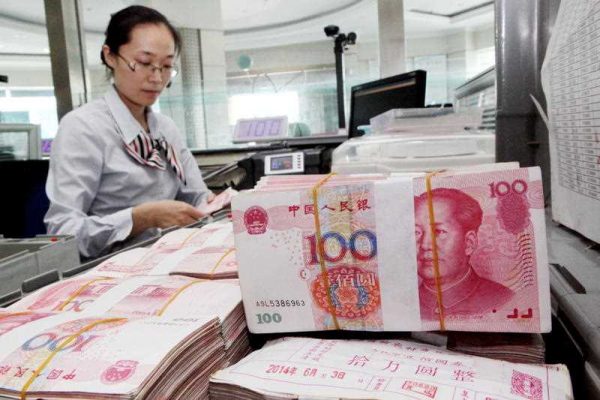The Special Drawing Rights (SDR) is an international reserve asset used to supplement IMF member countries’ official reserves. Its value is based on a basket currently consisting of four key international currencies. This includes the US dollar, euro, British pound and the Japanese yen currently.
The IMF has two criteria for SDR basket currencies. First there is the ‘major trading country’ criterion. This applies to currencies whose exports of goods and services during the five-year period ending 12 months before the effective date of the revision had the largest value. Then there is the ‘freedom of use’ criterion for currencies determined by the IMF to be widely used to make payments for international transactions and to be widely traded in the principle exchange markets.
In the 2010 review, the renminbi was deemed to meet the first criterion. But it fell short on freedom of use.
So what are the renminbi’s prospects in the review in 2015?
IMF staff produced a study in September 2011 which examined the criteria for SDR basket currencies. While confirming that the freedom of use criterion should be comprised of the ‘widely used’ and ‘widely traded’ clauses, the study proposed a revision of the indicators for the criterion according to the improvement of data availability and development of financial markets.
To decide whether a currency is ‘widely used’, the IMF would, under the proposed revision, look at the currency composition of reserves (with a possible supplementary indicator being the number of countries holding a currency in reserves), the currency denomination of international banking liabilities and the currency denomination of international debt securities. To determine whether a currency is ‘widely traded’, it would look at the volume of transactions in foreign exchange spot markets (and possibly the bid-offer spreads).
On these indicators, the renminbi would already meet the ‘freedom to use’ criterion. More countries are considering or have already made the renminbi one of their currencies for denominating reserve assets and the renminbi is already the 7th most widely used reserve currency globally.
By adopting a policy of bilateral central bank swap arrangements, the People’s Bank of China (PBOC) has focused on three major objectives: propping up trade following the global financial crisis, shaping a renminbi currency zone and building up renminbi deposits in foreign central banks. Those deposits, according to IMF guidelines, ‘are treated as reserve assets because the exchange provides the central bank with assets that can be used to meet the economy’s balance of payments financing needs and other related purposes’. The PBOC maintains currency swap arrangements with 28 countries or regions, reaching a total amount of RMB3.1 trillion.
In particular, the use of the renminbi in money market instruments in the Bank of International Settlements increased from US$0.9 million in the 3rd quarter of 2010 to 29.56 billion in the 2nd quarter of 2014. The renminbi is already the 7th largest reserve currency and ranks 9th in the amount outstanding of international debt securities.
What about the other criterion? Though China is a major world trader, the extent to which it has embraced financial globalisation is still very modest. China’s domestic equity and bond markets are indeed large and growing fast. Yet they punch below their weight given the size of the economy. And since funding is not a problem — China is the world’s biggest saver — the main obstacles are a fragmented regulatory framework, insufficient or inconsistent information disclosure, interest rate controls, and the absence of a large pool of institutional investors.
With a strong US dollar, increasing capital market volatility will impact the SDR currencies basket, affecting the SDR’s attractiveness as a reserve asset and as a unit of account. Among all the major currencies, analysts expect the renminbi will be one of the few major winners from a strengthening dollar. This will happen if China’s policymakers can point to gains from greater renminbi independence against the US dollar.
Including the renminbi in the SDR would make the value of the basket more representative of the structure of world trade — improving the basket’s legitimacy. The renminbi would also play an important role in balancing, the more independent US dollar, especially if China’s exchange rate regime is made more flexible.
Now is the time for the renminbi to enter into SDR basket.
Yide Qiao is the Deputy Chairman and General Secretary of the Shanghai Development and Research Foundation and the President of Excellence at the Academy of Development Research; Jiafei Ge is a researcher for the Shanghai Development and Research Foundation; Miriam L. Campanella is Associate Professor at the University of Turin and ECIPE, Brussels.

